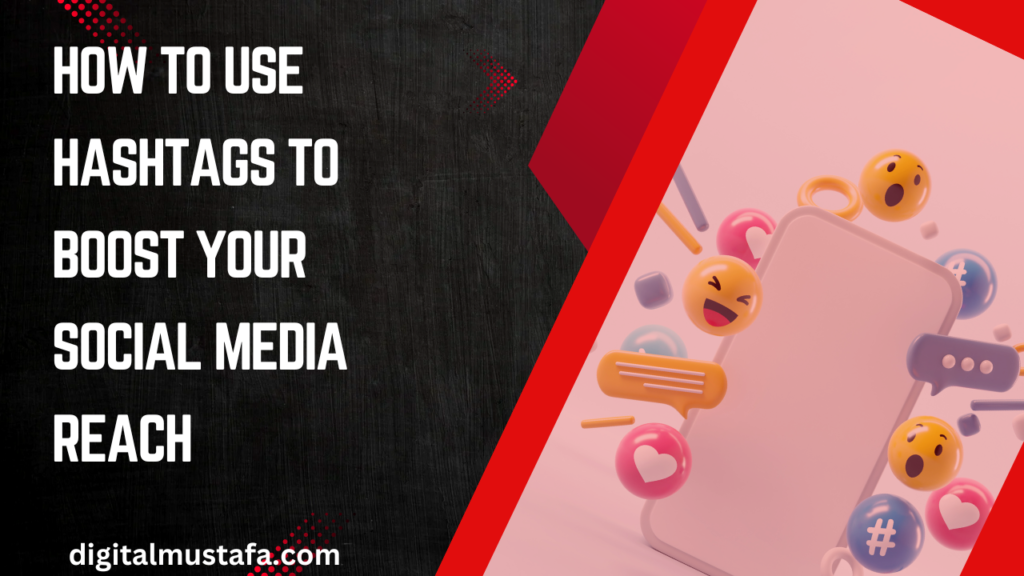In the digital age, having a strong brand presence on social media is crucial for businesses of all sizes. Social media platforms offer unparalleled opportunities to connect with your audience, build relationships, and promote your products or services.
However, with millions of brands competing for attention, standing out and creating a lasting impression requires a strategic approach. This blog post will guide you through the essential steps to build a strong brand presence on social media, from understanding your audience to leveraging content, engagement, and analytics.
Why a Strong Social Media Presence Matters
Before diving into the strategies, it’s important to understand why building a strong brand presence on social media is vital:
- Increased Visibility: Social media platforms like Facebook, Instagram, Twitter, LinkedIn, and TikTok have billions of active users. A strong presence on these platforms increases your brand’s visibility and helps you reach a larger audience.
- Brand Awareness: Consistent branding across social media platforms helps reinforce your brand identity, making it more recognizable and memorable to your audience.
- Customer Engagement: Social media allows for direct interaction with your customers, enabling you to build relationships, gather feedback, and respond to inquiries in real-time.
- Lead Generation: Effective social media marketing can drive traffic to your website, generate leads, and ultimately increase sales.
- Competitive Advantage: A strong social media presence can set your brand apart from competitors, positioning you as a leader in your industry.
Understanding Your Audience
The foundation of any successful social media strategy is a deep understanding of your audience. Knowing who your audience is, what they care about, and how they interact with social media is crucial for creating content that resonates with them.
Identifying Your Target Audience
Start by identifying your target audience. This involves understanding the demographics, interests, and behaviors of the people you want to reach. Key factors to consider include:
- Age: What age group does your target audience fall into? Different age groups use social media platforms differently, and your content should be tailored accordingly.
- Gender: Are you targeting men, women, or both? Gender can influence the type of content that resonates with your audience.
- Location: Where is your audience located? Geographical location can affect the best times to post and the type of content that will be most relevant.
- Interests: What are your audience’s hobbies, interests, and passions? Understanding this will help you create content that appeals to them.
- Social Media Usage: Which social media platforms does your audience use the most? This will determine where you should focus your efforts.
Table: Audience Demographics by Platform
| Social Media Platform | Primary Age Group | Gender Distribution | Key Interests |
|---|---|---|---|
| 25-54 | Evenly distributed | Family, Community, News, Entertainment | |
| 18-34 | Slightly more female | Fashion, Beauty, Travel, Food | |
| 25-44 | Slightly more male | News, Technology, Politics, Sports | |
| 30-49 | Evenly distributed | Business, Networking, Industry News | |
| TikTok | 16-24 | Slightly more female | Entertainment, Memes, Music, Dance |
Creating Buyer Personas
Buyer personas are fictional representations of your ideal customers, based on real data about your existing customers and market research. They help you understand your audience’s needs, preferences, and challenges.
How to Create Buyer Personas:
- Conduct Surveys: Gather insights from your existing customers through surveys or interviews.
- Analyze Data: Use analytics tools to gather data on your audience’s behavior, such as website visits, social media interactions, and purchase history.
- Identify Pain Points: Understand the challenges your audience faces and how your product or service can solve them.
- Define Goals: Know what your audience wants to achieve, whether it’s personal growth, entertainment, or solving a specific problem.
Example Buyer Persona:
- Name: Sarah, 28, Fashion Enthusiast
- Occupation: Marketing Professional
- Goals: Stay updated on the latest fashion trends, share style inspiration on social media.
- Challenges: Finding affordable yet stylish clothing, staying on top of trends in a busy lifestyle.
- Preferred Social Media Platforms: Instagram, Pinterest
Crafting a Consistent Brand Identity
Your brand identity is how you present your brand to the world, encompassing your brand’s voice, values, visuals, and overall messaging. Consistency in your brand identity across all social media platforms is key to building a strong and recognizable presence.
Defining Your Brand Voice
Your brand voice is the tone and style in which you communicate with your audience. It should reflect your brand’s personality and resonate with your target audience.
Steps to Define Your Brand Voice:
- Understand Your Brand Personality: Is your brand professional, casual, humorous, or authoritative? Define the characteristics that best represent your brand.
- Align with Audience Preferences: Your brand voice should align with what your audience expects and prefers. For example, a youthful audience may respond better to a playful and informal tone.
- Maintain Consistency: Ensure that your brand voice is consistent across all social media platforms, from posts and comments to direct messages and ads.
Quote: “Your brand is a story unfolding across all customer touchpoints.” — Jonah Sachs, Author and Marketing Strategist
Creating a Visual Identity
Visual identity refers to the visual elements that represent your brand, including your logo, color scheme, typography, and imagery. A strong visual identity helps your brand stand out and makes it instantly recognizable.
Elements of Visual Identity:
- Logo: Your logo should be simple, memorable, and scalable. Use it consistently across all social media profiles.
- Color Scheme: Choose a color palette that reflects your brand’s personality and use it consistently in your social media posts, profile pictures, and cover photos.
- Typography: Select fonts that are easy to read and align with your brand’s tone. Use these fonts consistently in your graphics and videos.
- Imagery: Use high-quality images that resonate with your audience and reflect your brand’s values. Whether it’s product photos, lifestyle shots, or graphics, maintain a consistent style.
Table: Visual Identity Elements
| Element | Description | Example Usage |
|---|---|---|
| Logo | Brand’s primary visual symbol | Profile picture, post watermarks |
| Color Scheme | Brand’s color palette | Backgrounds, text, graphics |
| Typography | Fonts used in branding | Text overlays, infographics |
| Imagery | Style of photos and graphics | Post content, ads, stories |
Developing a Content Strategy
Content is the cornerstone of your social media presence. Developing a content strategy involves planning, creating, and distributing content that aligns with your brand identity and engages your audience. A social media marketing agency like Social Think helps brands create winning content strategies that keep their audience hooked and engaged.
Types of Content to Share
Your content strategy should include a mix of content types to keep your audience engaged and interested. Consider the following types:
- Educational Content: Posts that provide valuable information, tips, and insights related to your industry. For example, a skincare brand might share content about the benefits of different ingredients.
- Entertaining Content: Content that entertains your audience, such as memes, funny videos, or behind-the-scenes looks at your business.
- Promotional Content: Posts that promote your products or services, including sales announcements, product launches, and special offers.
- User-Generated Content (UGC): Content created by your customers or followers, such as photos, reviews, or testimonials. Sharing UGC helps build community and trust.
- Interactive Content: Content that encourages audience participation, such as polls, quizzes, and Q&A sessions.
Content Calendar
A content calendar is an essential tool for planning and organizing your social media posts. It helps ensure that your content is consistent, timely, and aligned with your marketing goals.
How to Create a Content Calendar:
- Plan Ahead: Schedule content at least a month in advance to stay organized and avoid last-minute stress.
- Balance Content Types: Include a mix of content types to keep your feed varied and interesting.
- Consider Posting Times: Use analytics to determine the best times to post for maximum engagement.
- Align with Campaigns: Coordinate your social media content with your broader marketing campaigns, product launches, and events.
Quote: “Content is the atomic particle of all digital marketing.” — Rebecca Lieb, Author and Analyst
Building Engagement and Community
A strong brand presence on social media isn’t just about posting content—it’s about building relationships with your audience and fostering a sense of community. Engagement is key to achieving this.
Responding to Comments and Messages
Engagement is a two-way street. Actively responding to comments and messages shows your audience that you value their input and are attentive to their needs.
Best Practices for Engagement:
- Timely Responses: Aim to respond to comments and messages as quickly as possible. This not only shows that you’re attentive but also encourages further interaction.
- Personalization: Use the person’s name and personalize your response to make the interaction feel more genuine.
- Professionalism: Always maintain a professional tone, even when responding to negative comments. Address concerns politely and offer solutions where possible.
- Encourage Dialogue: Ask open-ended questions in your responses to encourage further discussion and engagement.
Hosting Live Sessions and Q&As
Hosting live sessions and Q&As on platforms like Instagram Live, Facebook Live, or LinkedIn can significantly boost engagement and help you connect with your audience on a more personal level. These sessions allow your followers to interact with your brand in real-time, ask questions, and receive immediate feedback.
Benefits of Live Sessions:
- Real-Time Interaction: Live sessions provide an opportunity for direct interaction with your audience, making the experience more engaging and dynamic.
- Increased Trust: Seeing the faces behind the brand and getting real-time responses helps build trust and transparency.
- Content Variety: Live sessions offer a break from pre-recorded content, providing a fresh way to engage your audience.
- Immediate Feedback: You can gauge audience reactions and receive instant feedback, allowing you to adjust your messaging or address concerns on the spot.
How to Host a Successful Live Session:
- Promote in Advance: Announce your live session ahead of time to build anticipation and ensure a good turnout. Use countdowns, teasers, and reminders across your social media platforms.
- Prepare Content: Plan the topics you will cover and any key messages you want to communicate. However, leave room for spontaneity and audience-driven questions.
- Engage with Participants: Acknowledge viewers by name, respond to their questions live, and encourage them to interact with the session by asking questions or leaving comments.
- Save and Share: After the live session ends, save the recording and share it across your social media channels for those who couldn’t join live.
Quote: “Live video is a powerful way to build trust with your audience. It allows them to see the real people behind your brand, which fosters a deeper connection.” — Mari Smith, Social Media Expert
Leveraging User-Generated Content (UGC)
User-generated content (UGC) is content created by your customers or followers that features your products, services, or brand. Leveraging UGC is a powerful way to build community, increase engagement, and add authenticity to your brand’s social media presence.
Benefits of UGC:
- Authenticity: UGC is perceived as more genuine and trustworthy because it comes from real customers rather than the brand itself.
- Community Building: Sharing UGC shows your audience that you value their contributions and helps build a sense of community around your brand.
- Content Variety: UGC provides a steady stream of content that you can share across your social media platforms, adding variety to your content mix.
How to Encourage and Use UGC:
- Create Branded Hashtags: Encourage your followers to share content using a branded hashtag that you can easily track and share.
- Run Contests and Challenges: Organize social media contests or challenges where participants submit UGC for a chance to win prizes or be featured on your account.
- Feature UGC on Your Channels: Regularly share UGC on your social media profiles, giving credit to the original creator. This not only fills your content calendar but also motivates others to create and share their content.
- Request Permission: Always ask for permission before sharing UGC on your channels. This is not only courteous but also a legal requirement in many cases.
Table: Examples of UGC Strategies
| Strategy | Description | Example |
|---|---|---|
| Branded Hashtags | Create a unique hashtag for followers to use | #MyBrandStyle for a fashion brand |
| Social Media Contests | Run contests encouraging users to submit UGC | “Share your favorite travel photo with #BrandJourney” |
| Featuring UGC | Share customer photos, reviews, or videos | Reposting a customer’s photo using your product |
| Collaborative Campaigns | Partner with influencers or customers for campaigns | A campaign where followers submit their take on a new product |
Consistency Across Platforms
Maintaining consistency across all social media platforms is crucial for building a strong and cohesive brand presence. Consistency helps reinforce your brand identity, making it more recognizable and trustworthy.
Consistency Tips:
- Unified Visual Identity: Use the same logo, color scheme, and typography across all platforms to ensure that your brand is instantly recognizable.
- Consistent Messaging: Your brand voice and messaging should remain consistent, regardless of the platform. Whether you’re posting on LinkedIn or Instagram, your content should reflect the same tone and values.
- Regular Posting Schedule: Maintain a regular posting schedule on all platforms to keep your audience engaged and ensure that your brand stays top-of-mind.
Utilizing Social Media Advertising
While organic content is essential, social media advertising can amplify your reach and help you target specific audiences more effectively. Investing in social media ads allows you to promote your brand, products, or services to a larger, more targeted audience.
Types of Social Media Ads:
- Sponsored Posts: Boost your organic posts to reach a wider audience.
- Carousel Ads: Display multiple images or videos in a single ad, allowing users to swipe through and explore more content.
- Video Ads: Use video content to capture attention and convey your message in a dynamic way.
- Lead Generation Ads: Capture leads directly within the social media platform, allowing users to sign up for offers or newsletters without leaving the site.
- Retargeting Ads: Target users who have previously interacted with your brand but didn’t convert, reminding them to take action.
Table: Benefits of Social Media Advertising
| Ad Type | Key Benefit | Example |
|---|---|---|
| Sponsored Posts | Extend the reach of high-performing content | Boosting a post about a new product launch |
| Carousel Ads | Showcase multiple products or features | Displaying different products in a collection |
| Video Ads | Engage users with dynamic and visually compelling content | A video ad demonstrating a product in use |
| Lead Generation Ads | Simplify the process of capturing leads | A form to sign up for a webinar directly within Facebook |
| Retargeting Ads | Re-engage potential customers | Showing an ad to users who abandoned their shopping cart |
Analyzing and Adjusting Your Strategy
Building a strong brand presence on social media is an ongoing process that requires regular analysis and adjustment. By monitoring your performance metrics, you can understand what’s working, identify areas for improvement, and refine your strategy for better results.
Key Metrics to Track:
- Engagement Rate: Measures the level of interaction (likes, comments, shares) with your content. A higher engagement rate indicates that your content resonates with your audience.
- Follower Growth: Tracks the increase or decrease in your follower count over time. Consistent growth suggests that your brand is attracting new audiences.
- Reach and Impressions: Reach refers to the number of unique users who see your content, while impressions indicate how often your content is displayed. Tracking these metrics helps you understand your content’s visibility.
- Click-Through Rate (CTR): Measures the percentage of users who click on links in your posts. A higher CTR indicates effective calls-to-action and content relevance.
- Conversion Rate: Tracks the percentage of users who complete a desired action (e.g., signing up for a newsletter, making a purchase) after interacting with your social media content.
Adjusting Your Strategy:
- Content Performance: Analyze which types of content (e.g., videos, images, articles) perform best and adjust your content mix accordingly.
- Audience Feedback: Pay attention to the comments, messages, and feedback from your audience to understand their preferences and expectations.
- Competitor Analysis: Regularly review your competitors’ social media strategies to identify trends, opportunities, and potential gaps in your own approach.
- A/B Testing: Experiment with different post formats, ad creatives, and messaging to see what resonates most with your audience. Use the insights gained to refine your strategy.
Quote: “Social media success isn’t just about posting; it’s about listening, analyzing, and constantly adapting to your audience’s needs and behaviors.” — Neil Patel, Digital Marketing Expert
Conclusion
Building a strong brand presence on social media is essential for connecting with your audience, increasing brand awareness, and driving business growth. By understanding your audience, crafting a consistent brand identity, engaging with your community, and leveraging the power of social media advertising, you can create a compelling and effective social media strategy.
Remember, success on social media doesn’t happen overnight. It requires consistent effort, continuous learning, and a willingness to adapt to changing trends and audience preferences. By following the best practices outlined in this blog post, you’ll be well on your way to establishing a strong, impactful, and lasting brand presence on social media.



